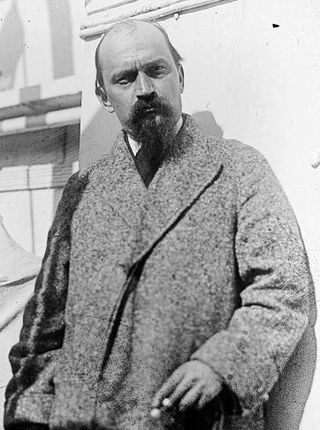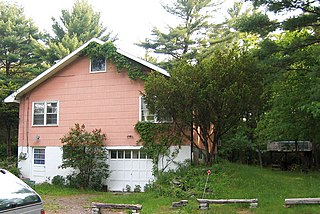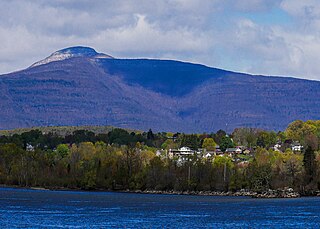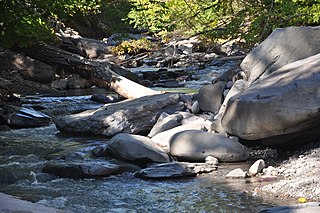
Ivan Meštrović was a Croatian and Yugoslav sculptor, architect, and writer. He was the most prominent modern Croatian sculptor and a leading artistic personality in contemporary Zagreb. He studied at Pavle Bilinić's Stone Workshop in Split and at the Academy of Fine Arts Vienna, where he was formed under the influence of the Secession. He traveled throughout Europe and studied the works of ancient and Renaissance masters, especially Michelangelo, and French sculptors Auguste Rodin, Antoine Bourdelle and Aristide Maillol. He was the initiator of the national-romantic group Medulić. During the First World War, he lived in emigration. After the war, he returned to Croatia and began a long and fruitful period of sculpture and pedagogical work. In 1942 he emigrated to Italy, in 1943 to Switzerland and in 1947 to the United States. He was a professor of sculpture at the Syracuse University and from 1955 at the University of Notre Dame in South Bend, Indiana.

Robert Kelly is an American poet associated with the deep image group. He was named the first Dutchess County poet laureate 2016-2017.

David Vincent Hayes was an American sculptor.

Annandale-on-Hudson is a hamlet in Dutchess County, New York, United States, located in the Hudson Valley town of Red Hook, across the Hudson River from Kingston. The hamlet consists mainly of the Bard College campus.

Big Pink is a house in West Saugerties, New York, which was the location where Bob Dylan and the Band recorded The Basement Tapes, and the Band wrote their album Music from Big Pink.

Opus 40 is a large environmental sculpture in Saugerties, New York, created by sculptor and quarryman Harvey Fite (1903—1976). It comprises a sprawling series of dry-stone ramps, pedestals and platforms covering 6.5 acres (2.6 ha) of a bluestone quarry.

Giuseppe Moretti was an Italian émigré sculptor who became known in the United States for his public monuments in bronze and marble. Notable among his works is Vulcan in Birmingham, Alabama, which is the largest cast iron statue in the world. On a personal level, Moretti was "known for his eclectic personality and for always wearing a green tie," but professionally, is claimed to be "the first man to use aluminum in art." Moretti enjoyed some celebrity in his lifetime, and was a friend of famed Italian tenor Enrico Caruso. It is even reported that the singer repeatedly praised Moretti's voice.
Abdul Rahman Mowakket is a contemporary sculptor from Syria.

Mikhail Horowitz is an American poet, performance poet, parodist, satirist, social commentator, author and editor.

Boaz Vaadia was an Israeli–American artist and sculptor who worked primarily in stone and subsequently by casting in bronze. Based in New York City since 1975, his studio was located in Brooklyn. The power of natural materials and the relation of human beings to that power determine the content of Vaadia's sculpture. Vaadia said of his work, "I work with nature as an equal partner. The strongest thing I address is that primal connection of man to earth. It's in the materials I use, the environments I make, and the way I work."

Maverick Concert Hall was built in 1916 and was part of the Maverick Artist Colony in Hurley, New York.

Kingston is a town in Ulster County, New York, United States. The Town of Kingston is in the northeastern part of Ulster County, north of the City of Kingston. Kingston is inside the Catskill Park. The population was 933 at the 2020 census.

Saugerties is a town in the northeastern corner of Ulster County, New York. The population was 19,038 at the time of the 2020 census, a decline from 19,482 in 2010. The village of the same name is located entirely within the town.

Woodstock is a town in Ulster County, New York, United States, in the northern part of the county, northwest of Kingston. It lies within the borders of the Catskill Park. The population was 6,287 at the 2020 census, up from 5,884 in 2010.

Ezio Martinelli was an American artist who belonged to the New York School Abstract Expressionist artists, a leading art movement of the post-World War II era.

Saw Kill is a 19.7-mile-long (31.7 km) main tributary that drains into Esopus Creek on the Hudson’s west bank.
James (Tad) Richards is an American writer and visual artist. He is also artistic director and former president of Opus 40, the sculpture park in Saugerties, New York.

John Bard was an American philanthropist who, along with his wife, Margaret Taylor Johnston, founded Bard College in New York, which was then known as St. Stephen's College, in order to train Episcopal Church ministers.

Charles Rosen was an American painter who lived for many years in Woodstock, New York. In the 1910s he was acclaimed for his Impressionist winter landscapes. He became dissatisfied with this style and around 1920 he changed to a radically different cubist-realist (Precisionism) style. He became recognized as one of the leaders of the Woodstock artists colony.

















